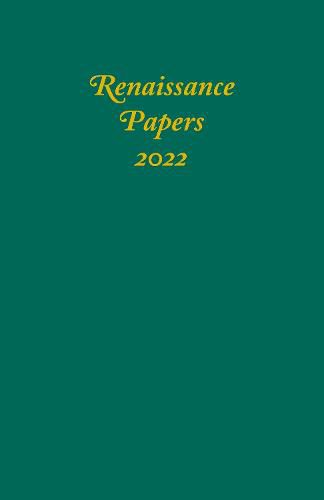Readings Newsletter
Become a Readings Member to make your shopping experience even easier.
Sign in or sign up for free!
You’re not far away from qualifying for FREE standard shipping within Australia
You’ve qualified for FREE standard shipping within Australia
The cart is loading…






Renaissance Papers collects the best scholarly essays submitted each year to the Southeastern Renaissance Conference. The theme of this year's volume is "sacred places, secular spaces." It begins with a "who is it" mystery, examining two portraits by Raphael that embody the sacred and the profane, respectively. The next essay engages both the sacred and pictorial innovationsin Holbein's predella The Dead Christ; while the following one views the sacred through the critical lens of race, arguing that Northern European churchmen normalized views on race by strategically placing racialized artifacts in their churches. The scene then shifts to 16th century Venice, where the Greek community contended with local authorities over the right to establish a sacred site for interring their dead. The next two essays swing the pendulum toward the secular: an essay on ecocriticism suggests that the early modern period expelled the sacred from nature and presents a Rabelaisian antidote, while an essay on Spenser's The Faerie Queene presents it as a blueprint for colonization. The volume concludes with Contributors: Julie Fox-Horton, Lorenz A. Hindrichsen, Heather Hirschfeld, Elizabeth Lisot-Nelson, Jesse Russell, Victor Velazquez, John N. Wall, Jennifer Wu. The journal is edited by Jim Pearce of North Carolina Central University and Ward Risvold of Georgia College and State University.
$9.00 standard shipping within Australia
FREE standard shipping within Australia for orders over $100.00
Express & International shipping calculated at checkout
Renaissance Papers collects the best scholarly essays submitted each year to the Southeastern Renaissance Conference. The theme of this year's volume is "sacred places, secular spaces." It begins with a "who is it" mystery, examining two portraits by Raphael that embody the sacred and the profane, respectively. The next essay engages both the sacred and pictorial innovationsin Holbein's predella The Dead Christ; while the following one views the sacred through the critical lens of race, arguing that Northern European churchmen normalized views on race by strategically placing racialized artifacts in their churches. The scene then shifts to 16th century Venice, where the Greek community contended with local authorities over the right to establish a sacred site for interring their dead. The next two essays swing the pendulum toward the secular: an essay on ecocriticism suggests that the early modern period expelled the sacred from nature and presents a Rabelaisian antidote, while an essay on Spenser's The Faerie Queene presents it as a blueprint for colonization. The volume concludes with Contributors: Julie Fox-Horton, Lorenz A. Hindrichsen, Heather Hirschfeld, Elizabeth Lisot-Nelson, Jesse Russell, Victor Velazquez, John N. Wall, Jennifer Wu. The journal is edited by Jim Pearce of North Carolina Central University and Ward Risvold of Georgia College and State University.